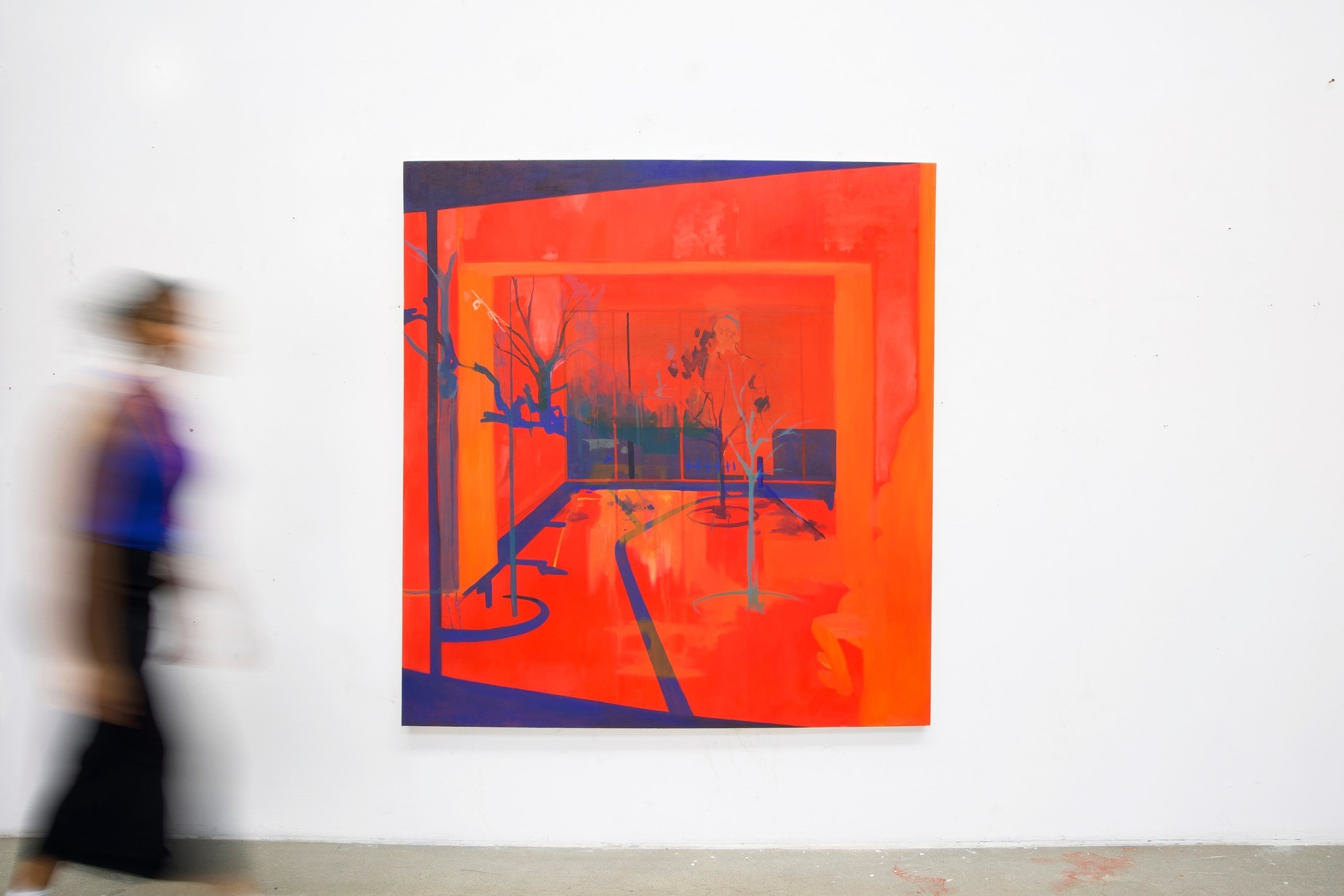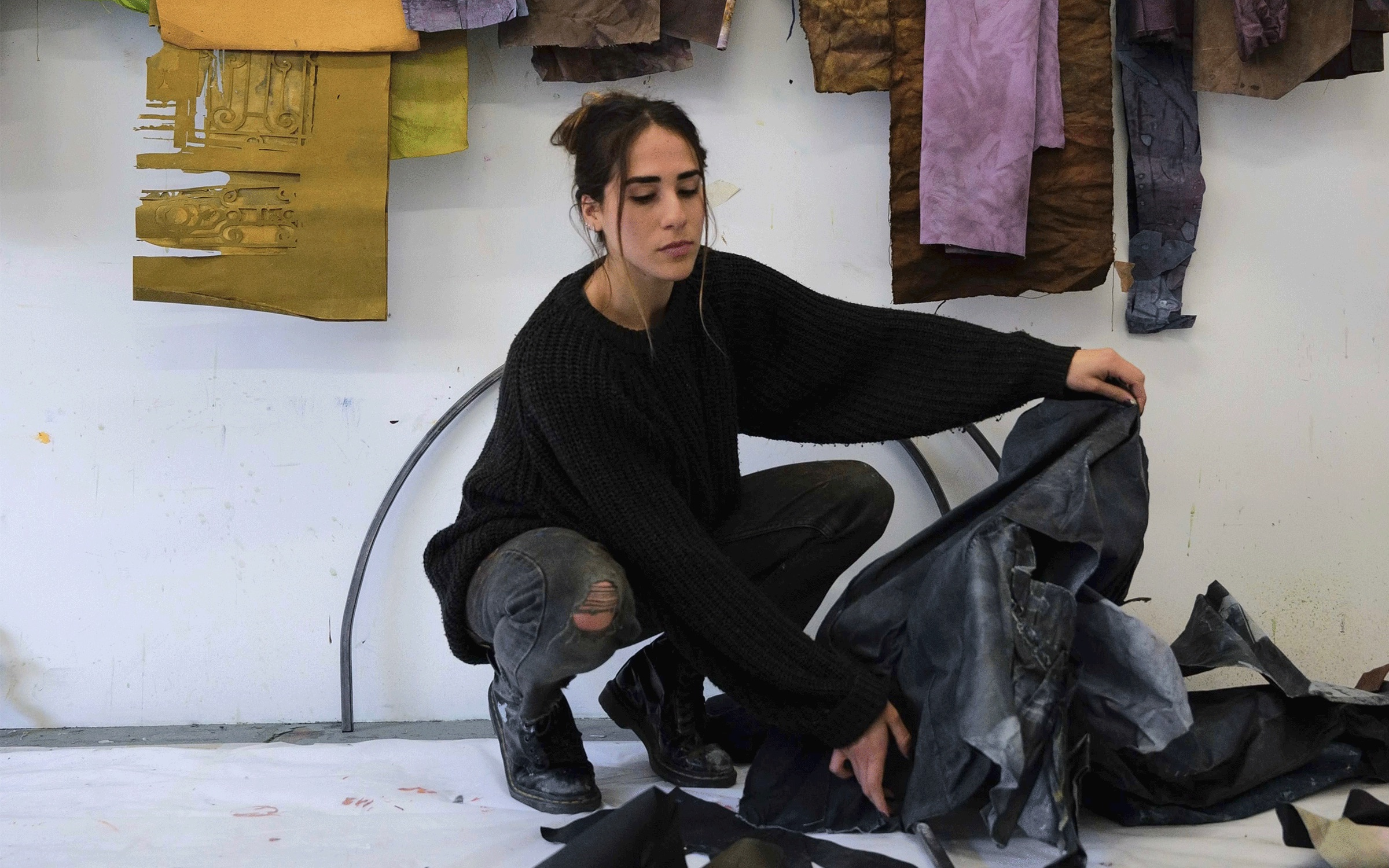Here are the five most significant trends shaping contemporary art, embodied by remarkable emerging artists who are defining what comes next.
The Trend: After years of conceptual dominance, artists are returning to visceral, emotional abstraction that prioritizes sensory experience over intellectual discourse. This movement embraces imperfection, memory, and the tactile qualities of materials to create deeply personal yet universally resonant works.
Featured Artist: Hettie Inniss

London-based Hettie Inniss exemplifies this trend through her extraordinary exploration of memory and color. Her layered textures conjure blurred childhood recollections, translating the emotional residue of lived experience into vibrant yet nuanced compositions. Working with torn muslin, thick acrylics on sanded wood, and graphite interruptions that read like emotional scars, Inniss creates intimate portals into personal history.
Her recent solo exhibition "Remains of the Daydream" at South London Gallery demonstrates how contemporary artists are turning inward, honoring incomplete and half-remembered pasts often erased from dominant narratives. By embracing creased canvases, stitched repairs, and uneven surfaces, Inniss transforms imperfection into poetry.
Show your work. Connect with peers. Build your presence on LettsArt - where new material voices are taking shape.
The Trend: Contemporary artists are reclaiming textile work as a powerful medium for cultural dialogue and political critique. This movement fuses traditional craft techniques with institutional critique, creating immersive environments that honor cultural origins while reinventing them for contemporary contexts.
Featured Artist: Nour Jaouda

Libyan-born, London-based Nour Jaouda masterfully demonstrates how feminine labor, displacement, and sacred space intersect through textile installation. Her upcoming exhibition "Threaded Thresholds" at Spike Island explores the symbolism of doors as markers of passage, exile, and spiritual transformation.
Jaouda creates temporary sanctuaries using woven walls, dyed linen portals, and delicate scaffolding structures stitched with silk and copper wire. Her work incorporates calligraphic motifs, Islamic geometric patterns, and reappropriated domestic fabrics, requiring viewers to navigate bodily through suspended textiles and hanging veils. In an era of hard-edged digital aesthetics, she reasserts the political power of touch, thread, and tradition, earning her a Turner Bursary nomination.
The Trend: As AI becomes ubiquitous, artists are increasingly examining our relationship with algorithmic systems. Rather than embracing digital tools wholesale, many are using traditional painting and drawing techniques to critique how machines view, record, and distort human experience.
Featured Artist: Noah Powell
North American conceptual artist Noah Powell represents the forefront of this "algorithmic seeing" movement. His practice begins with datasets—facial recognition patterns, social media imagery, surveillance feeds—which he filters through generative AI before painstakingly repainting onto canvas.
The results are uncannily beautiful: portraits shimmering with pixelated noise, landscapes glitching at the edges, eyes that never quite meet your gaze. Powell's series "Mirror States" explores the psychological toll of digital surveillance, featuring figures that appear half-erased, their features dissolving into data streams. Yet his tactile brushwork reasserts the human hand, creating a powerful contradiction between analog technique and algorithmic critique. His recent acquisition by the Whitney's New Media collection signals the growing importance of this hybrid approach.
The Trend: Interactive installations that respond to viewer presence are transforming how we experience art. These works move beyond passive observation to create relational spaces where the artwork exists in dialogue with the audience, constantly shifting based on movement, presence, and participation.
Featured Artist: Mary Peng

Chinese-American artist Mary Peng, based in Berlin, creates what can only be described as choreographies of perception. Her installations combine sculpture, mirrored surfaces, and ambient sound to produce environments that actively respond to viewer presence.
Her installation "Looking Glass Logic" at the 2025 Venice Architecture Biennale invited participants through a labyrinth of mirrored rooms and hanging acrylic lenses, where reflections split, multiplied, and dissolved in real-time. Incorporating motion sensors and live feedback loops, Peng's work transforms minimalist traditions with emotional complexity. Her smaller wearable sculptures -mirrored masks and fragmented facepieces - invite viewers to perform identity, questioning what's revealed and what's withheld.
Push the boundaries of how art is seen and felt. Join LettsArt and link up with artists reshaping perception and space.
The Trend: Following the NFT boom and bust, many artists are consciously returning to physical artifacts while maintaining digital awareness. This post-digital materiality movement embraces the tangible as a site of resistance against purely virtual art markets, creating works that acknowledge digital culture while asserting the irreplaceable value of physical presence.
Featured Artist: [Extended from Noah Powell's practice]
Powell's deliberate avoidance of blockchain art represents a broader movement of artists who lived through the NFT era and emerged with renewed appreciation for physical artifacts. By processing digital imagery through traditional media, these artists create works that exist simultaneously as digital critique and analog resistance.
This trend extends beyond individual artists to galleries and collectors increasingly seeking works that bridge digital consciousness with material presence. The movement represents a maturing relationship with technology—neither wholesale rejection nor uncritical adoption, but thoughtful integration that prioritizes lasting artistic value over technological novelty.
What connects these trends and artists isn't medium or geography, but a shared insistence that art must do more than decorate—it must disturb, recall, involve, and ask essential questions about human experience in our rapidly changing world.
These movements mark a decisive turn toward the embodied, the immersive, and the culturally complex. In a time of algorithmic overload and geopolitical rupture, artists like Inniss, Jaouda, Powell, and Peng offer something rarer than novelty: clarity, integrity, and depth.
The art world of 2025 is not abandoning technology but developing a more sophisticated relationship with it. Artists are creating works that honor traditional techniques while engaging contemporary concerns, building bridges between past and future, local and global, digital and physical.
Be seen. Be supported. Be part of LettsArt’ s community of emerging artists defining what’s next.
These artists represent more than emerging talent - they are defining what comes next in contemporary art. Keep watching, keep collecting, and keep supporting the voices that will shape our cultural future.